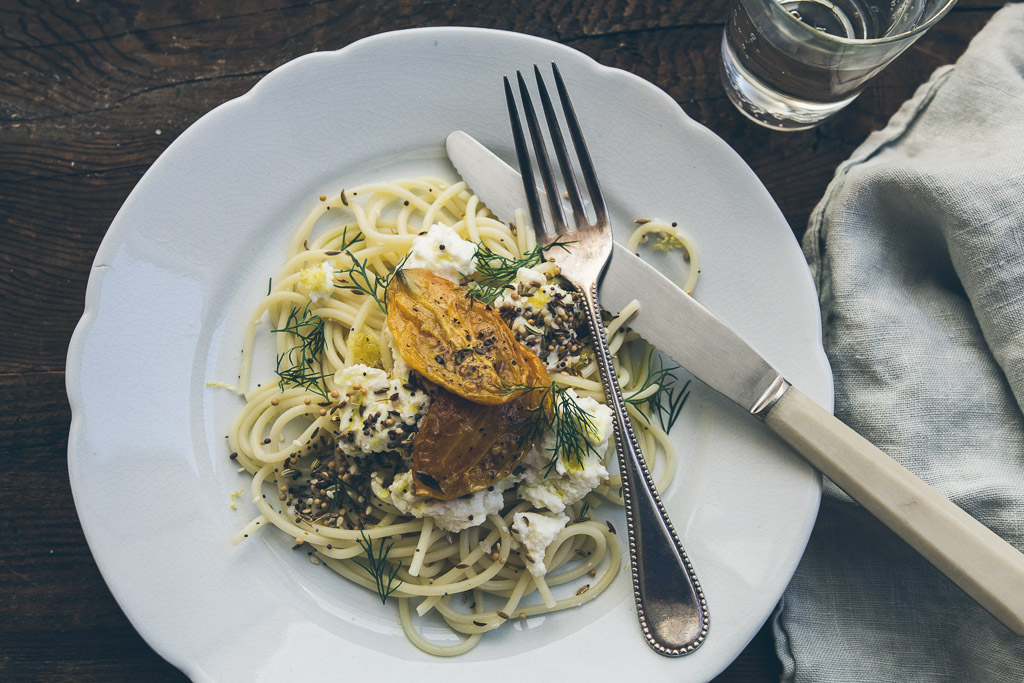Hello, lovely people!
Despite my careful planning, I have about a gazillion things to do before we leave town for the holidays. (How does that always happen?) But I wanted to leave you with one more homemade holiday gift idea before I jump on my plane!
If you read last year’s holiday post, you know I’m a huge fan of giving chocolate bark. It’s easy, beautiful and can be topped with almost anything you have floating around in your cupboards: chopped peppermints, nuts, dried fruit, cereal, candied citrus zest, crushed cookies. You name it.
This year’s bark is a little more involved since it calls for a base of buttery toffee. Don’t be daunted though--it’s not hard at all as long as you have a heavy-bottomed pot and a good thermometer. If you want to get fancy, you can temper the chocolate. Or not. The good news is you top this bark with so many crunchy toasted seeds, it's pretty hard to tell if the chocolate is tempered or not. (Win!)
I’ll be writing to you next from the other side of the Atlantic. Until then, I wish you all a Merry and Bright Holiday!
XO,
Olaiya
Seeded Toffe Bark
- Vegetable oil or butter for the pan
- ½ cup (1 stick) unsalted butter
- ¾ cup granulated sugar
- ½ cup (packed) light brown sugar
- ½ teaspoon kosher salt
- 1 teaspoon vanilla extract
- ¼ teaspoon baking soda
- 5 oz. bittersweet chocolate (I like 72% Guittard Onyx wafers)
- ½ cup pepitas (raw hulled pumpkin seeds)
- 1 ½ tablespoons white sesame seeds
- 1 ½ tablespoons black sesame seeds
- 2 tablespoons cacao nibs
- ½ teaspoon flaky sea salt (I like Maldon)
- Special Equipment: Instant-read thermometer
*Note: Tempering the chocolate keeps it shiny and gives it a nice snap when you break it. If you decide to temper, the method described below (based on Alice Medrich’s technique) is the easiest I’ve found. A good thermometer makes tempering (and all candy-making) a lot easier. Lots of people use a classic candy thermometer, but I prefer something like this because it's more versatile. If price is not an issue, I think this Thermapen is the best thermometer you can buy.
Brush a large rimmed sheet pan very lightly with oil or rub very lightly with butter. Combine the ½ cup butter, granulated and brown sugars, kosher salt, and 2 tablespoons of water in a large heavy saucepan fitted with a thermometer. Cook over medium-high heat, swirling the pan occasionally, until the thermometer registers 300° (the toffee should be a deep golden brown), 7–9 minutes.
Remove the toffee from heat and carefully stir in the vanilla extract. Sprinkle the baking soda evenly over the toffee and stir just until incorporated (be careful not to overmix). Quickly scrape the mixture onto the prepared sheet pan and tilt from side to side to spread mixture slightly. Do not touch the underside of the pan as it will be very hot. Set aside to cool for at least 10 minutes. Wash and dry the thermometer.
In a small, dry frying pan over medium-low heat, gently toast the pepitas just until fragrant and beginning to pop and brown, about 3 to 5 minutes. Transfer to a small plate and set aside to cool. If your white sesame seeds are raw, add them to the same pan and toast until light golden brown, 3-5 minutes. Transfer to a small plate and set aside to cool.
When your toffee is completely cool, prepare your chocolate. Roughly chop 4 oz. of the chocolate. Leave 1 oz. in large pieces and set aside. Fill a small saucepan with 1 inch of water and heat over medium until just under the simmer. Reduce the heat to low or medium-low to keep the water just under a simmer. Place the 4 oz. of roughly chopped chocolate in a medium stainless steel mixing bowl and set over the warm water. Use a flexible spatula to stir until ¾ of the chocolate has melted. Remove from the heat and continue to stir until all of the chocolate has melted, 1-2 minutes. If all the chocolate has not melted, place the bowl briefly over the warm water and stir.
Use the instant-read thermometer to take the temperature of the chocolate. If it is over 100°F, let it cool to about 100°F. Add the reserved 1 oz. large pieces of chocolate and stir until the temperature reaches 90°F.
Test to see if the chocolate is tempered by drizzling a little on the blade of a knife and setting aside in a cool place. If the drizzle starts to set within 3 minutes, without streaks or mottling, it is tempered and ready to use. If it still looks wet after 3 minutes, stir the chocolate and chunks for a few minutes more and test again. When the chocolate is tempered, remove the unmelted chunks and set aside for later use.
Pour the melted chocolate over the toffee and spread evenly with an offset or flexible spatula. Scatter the seeds and cacao nibs over the top, then sprinkle with the salt. Set aside until the chocolate is firm, at least 2 hours.
Lift the bark from the sheet pan with a thin metal spatula then break into large shards.
Makes 2 dozen 2- to 3-inch pieces.
Adapted from Bon Appetit


























